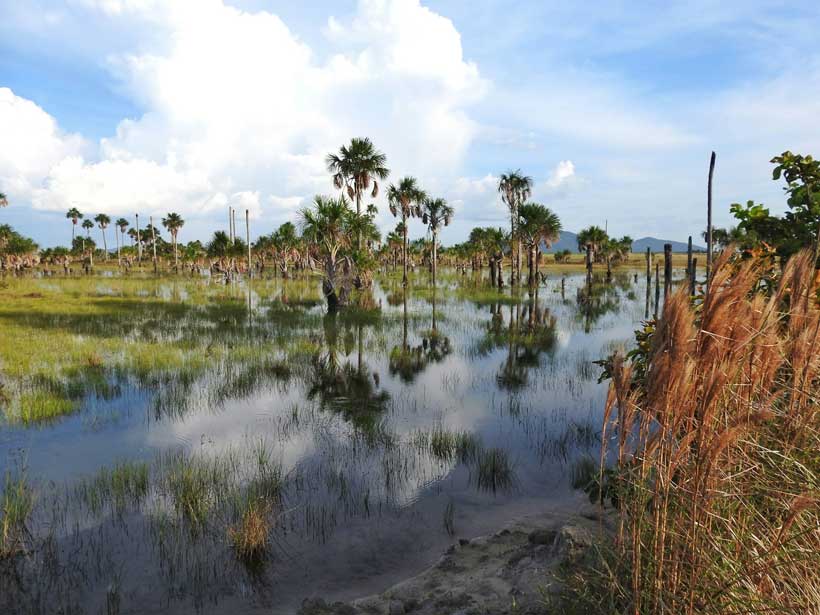The Cerrado is a global breadbasket, accounting for 60% of Brazil’s agricultural production and 22% of global soybean exports. However, it receives significantly less attention and legal protection than the Amazon rainforest, resulting in a 43% surge in deforestation in the Cerrado last year compared to a 50% drop in the Amazon, according to government data.
Land-clearing for agricultural production has already wiped out half of the Cerrado’s native vegetation. If current trends continue, the ecosystems that Brazil’s soy, cattle, sugarcane and corn trades rely on will suffer, causing worldwide food shortages and extensive economic damage. As Brazil gears up to host the G20 Summit and COP30 this year, it is well-placed to position itself as a climate leader by spearheading a balanced approach that supports the country’s agricultural sector while safeguarding the Cerrado.
The report, The Cerrado: Production and Protection, developed by the World Economic Forum’s Tropical Forest Alliance initiative in collaboration with Systemiq, has identified that $72 billion could be added to Brazil’s GDP each year by 2030, based on an analysis of figures in Brazil’s Ecological Transformation Plan, by restoring degraded land and increasing the amount of protected areas in the Cerrado.
Jack Hurd, Executive Director, Tropical Forest Alliance, said:“The Cerrado is the world’s largest and most biodiverse savannah, making it one of the most important ecosystems on our planet – and yet it receives little attention and less legal protection than it needs. This has resulted in significant land degradation and exploitation, which poses a major threat to the food systems that billions of people across the globe rely on.
“This report aims to kick-start a much-needed discussion among Brazil’s policy-makers, agribusiness and other key decision-makers about how we can implement a new agricultural model in the region – one that simultaneously scales up production, enhances biodiversity and secures the benefits of ecosystems for current and future generation, and protects Indigenous and local communities.”
Drawing on comprehensive research and interviews with Brazilian experts, the paper proposes several solutions, including sustainable production methods such as agroforestry and regenerative farming, which will create healthier conditions for food growth, increase productivity and result in greater profits and more jobs.
As well as being an agricultural powerhouse, the Cerrado also has huge potential for bioenergy – energy derived from plants and other natural resources – and it is already home to a third of Brazil’s biogas facilities. With bioenergy set to play a key role in the future global energy system, the report outlines how the industry could be scaled sustainably in the Cerrado, which could open up opportunities for Brazil in growing markets such as sustainable aviation fuel and green hydrogen. There is, however, the risk this could also open the door for further deforestation and conversion and, as such, investment and other measures must be taken to protect the Cerrado.
The new model will require greater public-private sector collaboration and action from across the food industry and beyond, including policy-makers, businesses, financial institutions and technology companies.
Patricia Ellen da Silva, Partner and Head of Brazil Office, Systemiq, said: “With the world’s eyes on Brazil in the run-up to the G20 and COP30, the country has a unique opportunity to position itself as a leader on climate and nature action by integrating the food security and nature protection agenda in the Cerrado, one of the world’s most important biomes.
“The Cerrado must be at the centre of the global transformation of food systems and energy production as well as nature conservation strategies and technologies. This won’t be a simple task, but by raising awareness of the biome’s importance and the connection between production and protection, this paper will put us on a pathway to a more sustainable Cerrado.”
Joaquim Levy, Director for Economic Strategy, Banco Safra, Brazil, said:“Agriculture in the Cerrado is an extraordinary success, helping to feed billions around the world. As the sector becomes more robust, many people in Brazil, including farmers, believe it is the right time to address and minimize its impact on the environment to ensure the sustainability of this bounty for coming generations.
“This white paper advocates a balanced approach to agricultural production in the region, which would drive food security and economic growth while protecting the native Cerrado and many livelihoods.”
